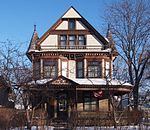Killing of Ricky Cobb II
The Killing of Ricky Cobb II occurred on July 31, 2023 after he was pulled over on Interstate 94 in Minneapolis for a traffic violation. During the traffic stop, a trooper found that Cobb was wanted in Ramsey County for violating a protection order. Ramsey County officials requested the troopers arrest Cobb. Two troopers approached the doors of Cobb's vehicle. While the trooper on the driver's side informed Cobb he was being arrested, the other trooper unlocked and opened the passenger side door. Cobb put the car into drive and released the brake and the car moved forward. The passenger-side trooper reached for his gun and Cobb stopped the car. While ordering Cobb to get out of the car, the officer on the passenger side shot twice, killing Cobb. The car kept moving and traveled a short distance before crashing into a median barrier. Cobb was later pronounced dead at the scene. A trooper was later charged in February 2024 with unintentional murder as well as manslaughter as a result of the shooting. The case was later dropped by Hennepin County Attorney Mary Moriarty in June 2024 after a review of evidence.
Excerpt from the Wikipedia article Killing of Ricky Cobb II (License: CC BY-SA 3.0, Authors).Killing of Ricky Cobb II
East Lyndale Avenue North, Minneapolis Near North
Geographical coordinates (GPS) Address Nearby Places Show on map
Geographical coordinates (GPS)
| Latitude | Longitude |
|---|---|
| N 44.988 ° | E -93.288 ° |
Address
East Lyndale Avenue North
East Lyndale Avenue North
55411 Minneapolis, Near North
Minnesota, United States
Open on Google Maps






